Imagine pulling a delicious cake out of an oven, the smell slowly spreads around the room and then through the house. This is diffusion! The lovely cake smelling particles move from where there are lots of them ( high concentration ) to where there are less of them ( low concentration ). Diffusion can be quite a slow process as the movement of particles is random. One very easy diffusion demonstration is to pour squash or food colouring into a glass of water and watch as the colour spreads through the glass.
Diffusion is the movement of a substance from an area of high concentration to an area of low concentration until its concentration becomes equal throughout the available space.
This video shows diffusion in action.
Diffusion Demonstration with Squash and Water
Squash or juice in water is a great demonstration of diffusion. You can see the squash starts in one area and then starts to move from areas of high squash concentration to areas of low concentration. Eventually the squash spreads throughout the whole glass and the colour becomes paler and even throughout.
I used food colouring in the images below to make the process easier to see.
Diffusion using food colouring and water
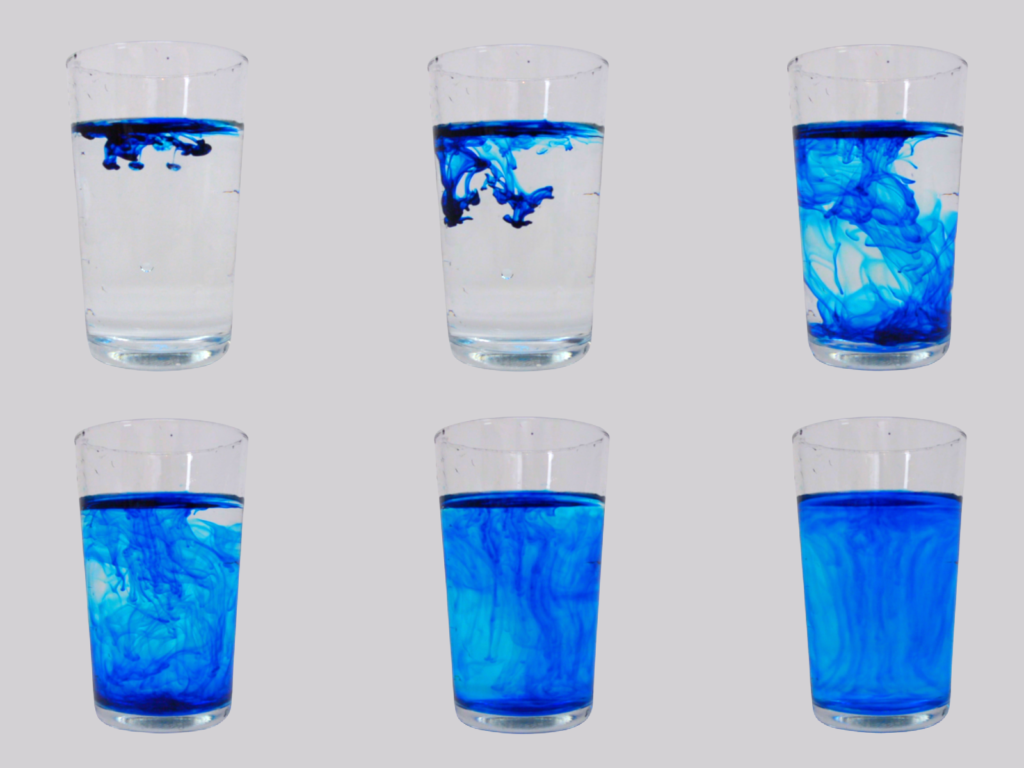
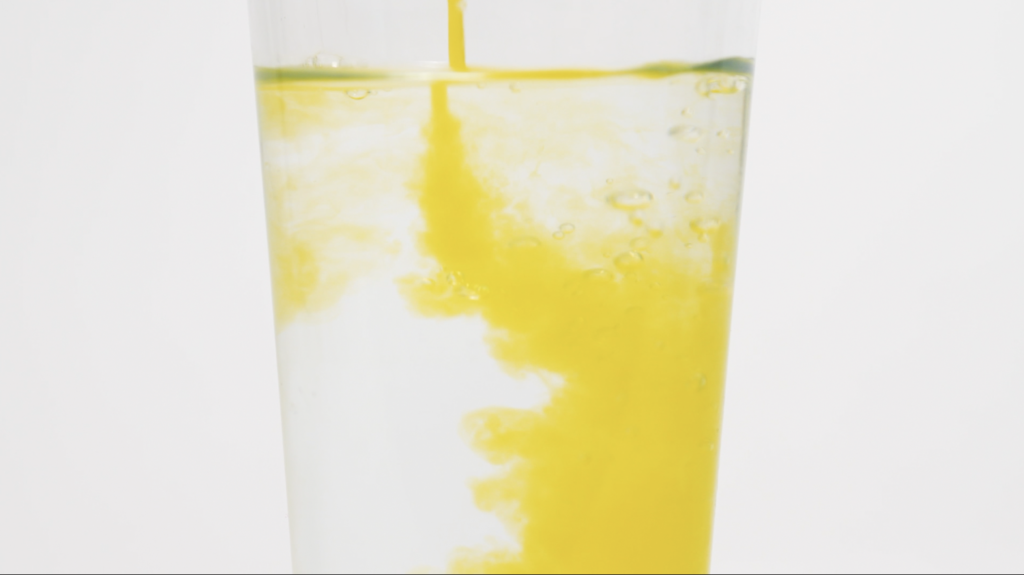
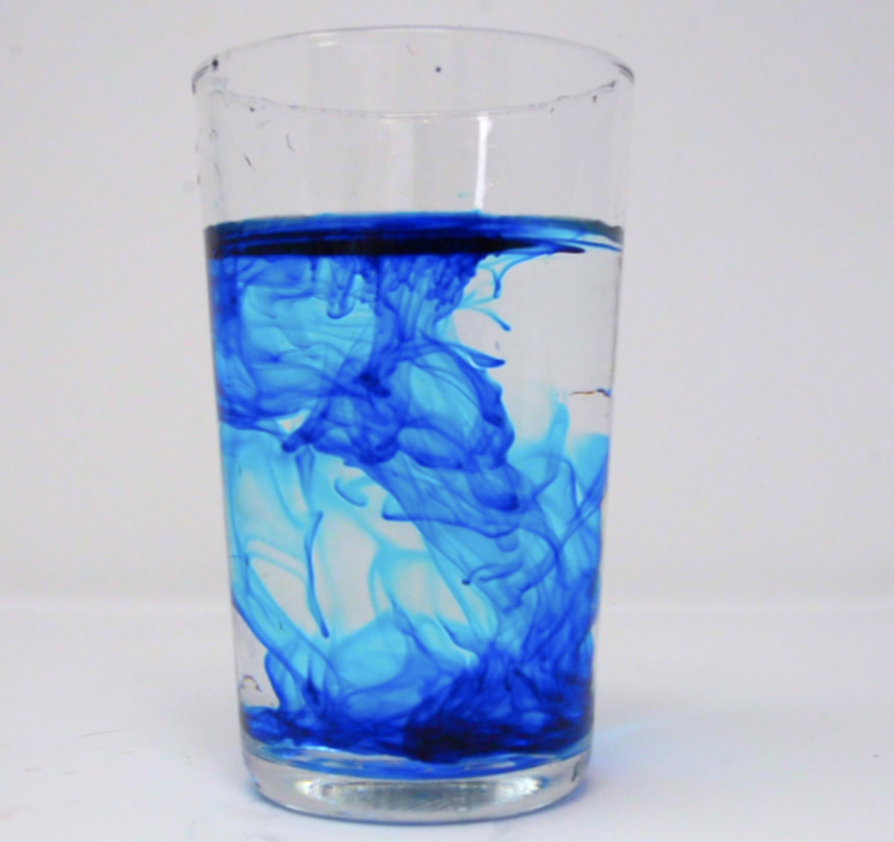
What is diffusion?
Diffusion is the movement of a substance from an area of high concentration to an area of low concentration.
Diffusion occurs in gases and liquids. Particles in gases and liquids move around randomly, often colliding with each other or whatever container they are in. When they collide they change direction which means eventually they spread out through the whole available space.
Examples of Diffusion
Diffusion in humans
Oxygen diffuses from the alveoli of the lungs into red blood cells. This is because the concentration of oxygen in the alveoli is high and the concentration of oxygen in the red blood cells is low. Red blood cells have very thin cell walls which allows oxygen to diffuse easily in and out of them.
Diffusion in plants
Plants use carbon dioxide fro the air for photosynthesis. Carbon dioxide enters the leaves through small holes called stomata in the underside of the leaf. Spongy cells called mesophyll cells allow gases to diffuse easily in and out of the leaf. The stomata can open and close so the plant doesn’t lose too much water.
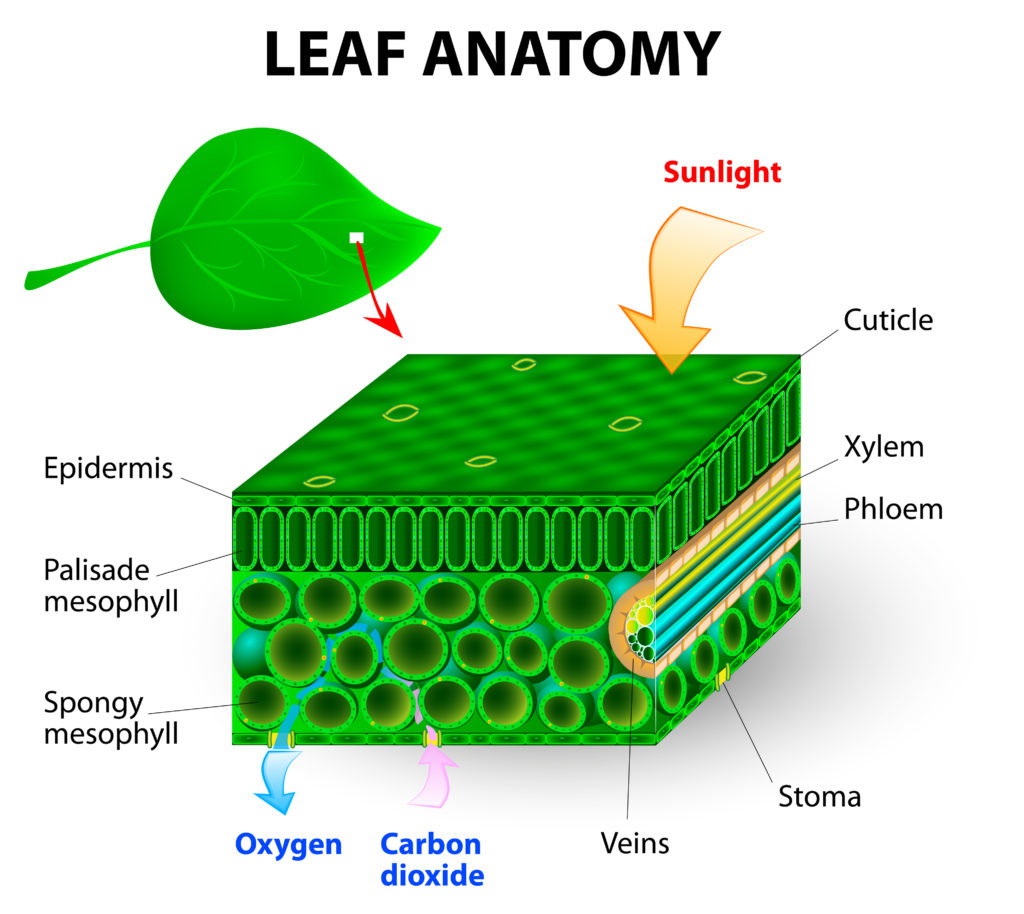
More diffusion demonstrations
Making a cup of tea is another great diffusion demonstration. This diffusion activity using different shaped tea bags is great fun.
Another example of movement of substances important for living things is osmosis.
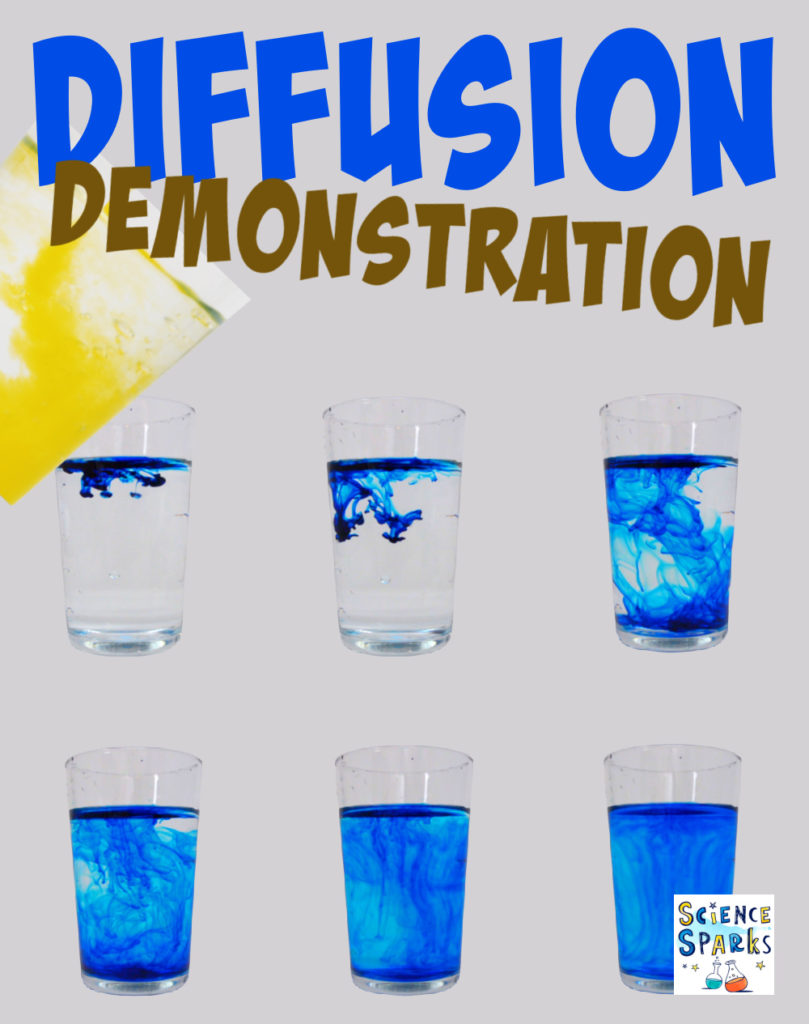
Last Updated on November 3, 2021 by Emma Vanstone

Leave a Reply